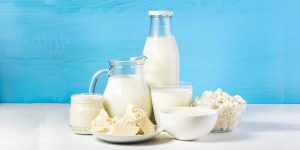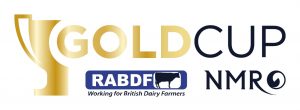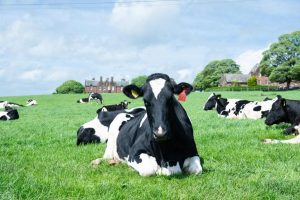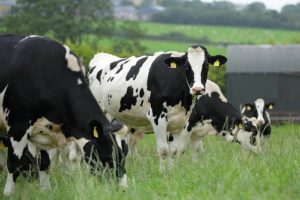
The programme adds to the bad press the UK’s dairy farming community has been receiving, no doubt increasing the number of people who rightly feel concerned about consuming milk and other dairy products from intensively farmed dairy cows.
During ‘Veganuary’, I’ve been on the farm, and while putting out silage in the JCB, I’ve been listening to Heart Radio, (as you do) and I’ve been struck by the number of advertisements for plant-based milks, burgers and other foods, which seem to dominate the advertising slots between the ‘bangers’, (current jargon for great tunes)!
Everyone’s at it: from Sainsbury’s to McDonald’s, and even companies like Riverford Organic Farmers, now have regular adverts on Heart, implicitly endorsing the switch towards plant-based diets. Before watching Panorama which, as a Welsh dairy farmer myself, I did find pretty depressing, I recorded a podcast with a man called Simon Fairlie, who, in his memoir, Going to Seed, described the dairy cow as the backbone of sustainable food production.
What does he mean by this? His message is that there is no more efficient way of converting the grasslands of the United Kingdom’s landscape than harnessing the capacity of the dear old dairy cow. She is a real marvel – not only producing milk for us and her calves, but at the same time manuring and fertilising the grasslands she grazes, building fertility for subsequent crops of vegetables and potentially other plant-based crops. Then at the end of her life, via a local abattoir of course, she can be eaten too. As an example, we just sold a barren cow to Nate the butcher in London who is preparing dairy cow beef for a dinner of 60, hosted by Jamie Oliver.
Can we, should we, square our consciences with such ‘exploitation’ of this wonderful, domesticated animal? I think the answer is yes, but only if we ensure that in future, all our dairy farms are designed in such a way that farmers are able to show her the compassion and love that she deserves, both throughout her milking lifetime and right up to the moment of her death as part of a farming system which is human-centric, sustainable and allows her to graze at pasture for at least half the year. I’d argue that to achieve this combination of loving individual attention, sound nutrition and sustainable farm management, it would be difficult, if not impossible, if the herd size is much more than 200 cows.
This is very far from the reality today. When I started milking in 1973, there were around 3000 herds mostly of 30 or 40 cows supplying the regional creamery in Felin Fach; but today there are just a handful left with many of them numbering 500 or more cows. You can’t blame the dairy farmers for this lamentable situation. It is economics that have forced producers onto this treadmill of intensification, in part due to our apparent obsession with cheap milk. Dairy farmers have become commodity slaves, as have their exploited cows, producing ever greater quantities of milk from increasingly large herds in a rat race to stay viable. The result of this is that today we have industrialised dairy farming, systems which are unethical and unsustainable, in a quest to keep the cost of milk down.
However, in the same way that we have been complicit in the cultural cleansing of the family dairy farm, we have the power to enable its renaissance.
To enable this, we need a set of standards for ethical and sustainable milk production linked to a completely transparent labelling system. The organic system goes a long way towards achieving this, but we need to be even more demanding, in my opinion. I had a conversation with the marketing manager for Yeo Valley some years ago, during which I suggested that it would be a good idea if there was a premium for herds of less than 150 cows, plus an additional incentive paid to farmers with native breeds. In my future conversations with Arla and other dairy co-ops, I’m going to argue that they should do exactly that. At the moment the opposite is the case – the dairy co-ops reward farmers with larger herds and high yielding cows, justifying this through a combination of lower collection costs and so-called increased carbon efficiency! This has to change.
One last point – we should resist any temptation to demonise the dairy farming community, it’s mostly not their fault. They have become victims of this relentless drive towards industrial dairy farming, encouraged by successive Governments, which has led the virtual elimination of small dairy family farms, because few of those with less than around 100 cows have been able stay in business. The only reason that we are not one of those statistics at Holden Farm Dairy, is because we are making cheese, which adds value – and I have a day job.
This is not an acceptable situation. We have to find a way to properly reward dairy farmers who move towards smaller, more ethical and sustainable systems of production, and penalise practices which cause environmental or welfare harm.
If the end result is higher milk prices, we should pay. And if this higher priced milk is unaffordable for lower income groups, then the Government should step in. Everyone should have the right to high quality, health promoting milk from ethical and sustainable dairy farms.

























